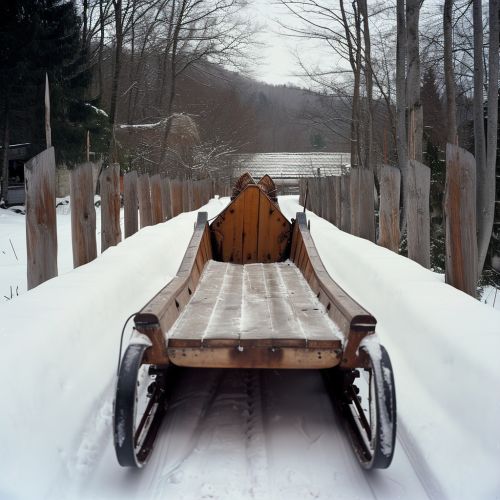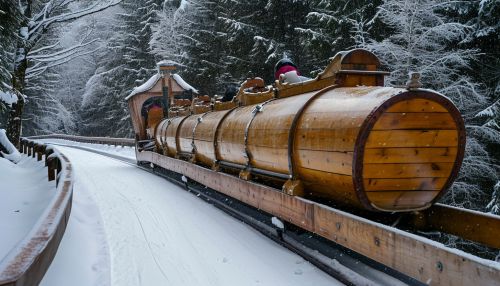Bobsleigh
History
The sport of bobsleigh traces its roots back to the late 19th century. It was first developed by the Swiss, who combined the concepts of skeleton and luge to create a new winter sport. The first organized races took place in St. Moritz, Switzerland, in the 1890s, with competitors racing down icy tracks on large, wooden sleds that could accommodate two or four riders.


As the sport gained popularity, it began to evolve. The sleds, initially made of wood, were replaced by steel-framed sleds. The tracks also underwent significant changes, with the introduction of artificial ice tracks in the 20th century. This allowed for greater control over the conditions of the track, leading to more consistent and competitive races.
The sport of bobsleigh was included in the first Winter Olympics in 1924, and has been a staple of the Winter Games ever since. Over the years, the sport has seen numerous technological advancements, with sleds becoming more aerodynamic and the materials used in their construction becoming lighter and stronger.
Equipment
The primary piece of equipment in bobsleigh is the sled itself. Modern bobsleighs are made from a combination of materials, including steel, aluminum, and various composites. The sled consists of a main body, known as the hull, which is designed to be as aerodynamic as possible. The hull is attached to a set of steel runners, which make contact with the ice and allow the sled to slide.
The design and construction of the sled is governed by strict regulations set out by the International Bobsleigh and Skeleton Federation (IBSF). These regulations specify the maximum and minimum dimensions of the sled, as well as the maximum weight, including the crew.
In addition to the sled, athletes wear specialized equipment to protect themselves and to improve their performance. This includes a helmet, a racing suit, and spiked shoes to help them gain traction on the ice during the push start.
Rules and Regulations
Bobsleigh races are governed by a set of rules and regulations established by the IBSF. These rules cover everything from the design of the sled to the conduct of the athletes during the race.
One of the most important rules in bobsleigh is the start. The race begins with the team pushing the sled down a short stretch of track before jumping in. This is known as the push start, and it is crucial to a team's success. The faster the push start, the more momentum the sled will have as it enters the main part of the track.
Once the team is in the sled, they must navigate the track as quickly as possible. The track is filled with a series of twists and turns, known as curves, which the team must navigate. The driver steers the sled, while the other team members shift their weight to help guide the sled through the curves.
The race is timed, with the team completing the course in the shortest amount of time declared the winner. In most competitions, teams will make multiple runs down the track, with their total time determining their final placement.
Techniques
Successful bobsleigh teams must master a variety of techniques. The push start is one of the most important aspects of a bobsleigh race. Teams must synchronize their movements to push the sled as quickly as possible. Once in the sled, the team must adopt a streamlined position to reduce air resistance.
Steering the sled is another crucial skill. The driver must anticipate the curves of the track and steer accordingly. Too much steering can slow the sled down, while too little can result in the sled overturning.
Weight shifting is also important. The team members in the back of the sled can help guide the sled by shifting their weight in response to the driver's steering. This can help the sled navigate the curves more effectively.
Major Competitions
There are several major competitions in the sport of bobsleigh. The most prestigious is the Winter Olympic Games, where bobsleigh has been a regular event since 1924. The World Cup and the World Championships are also major events, attracting the top bobsleigh teams from around the world.
In addition to these international competitions, there are also numerous national and regional competitions. These events provide opportunities for up-and-coming athletes to gain experience and for established teams to hone their skills.
